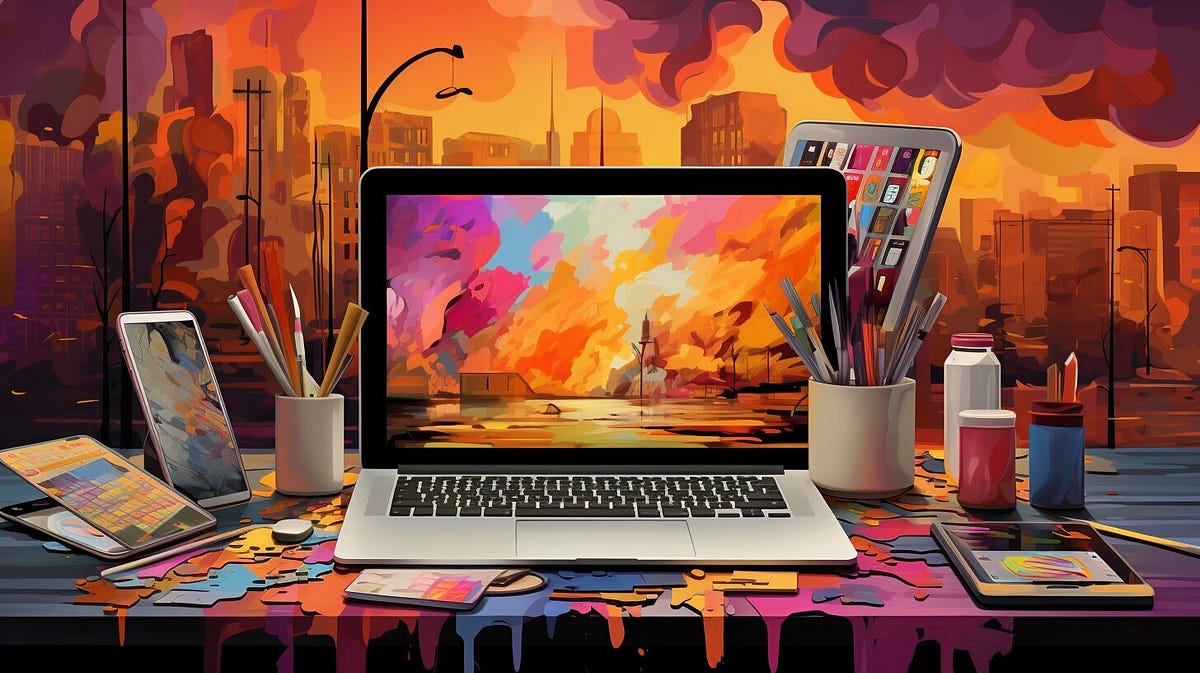In the dynamic world of marketing, visual communication is a powerful tool. Among the various elements that contribute to visual appeal, colors play a pivotal role in shaping perceptions, eliciting emotions, and influencing consumer behavior. In this blog post, we will delve into the fascinating realm of color psychology in graphic design, exploring how different hues can evoke specific emotions and impact brand messaging.
The Basics of Color Psychology:
Colors have the remarkable ability to communicate without words. Understanding the basics of color psychology is essential for graphic designers aiming to create visuals that resonate with their target audience. Let’s take a closer look at some fundamental principles:
Warm Colors:
- Red: Often associated with passion, energy, and urgency, red can be a powerful choice for brands looking to create a sense of excitement and intensity. It is frequently used to grab attention and stimulate appetite, making it popular in the food and beverage industry.
- Orange: Combining the energy of red and the cheerfulness of yellow, orange exudes warmth and friendliness. It is often used to convey a sense of enthusiasm and creativity, making it a popular choice for brands that want to appear approachable.
- Yellow: Symbolizing optimism and positivity, yellow is known to grab attention and create a sense of happiness. It is frequently used to evoke feelings of warmth and cheerfulness.
Cool Colors:
- Blue: As one of the most widely used colors in branding, blue is associated with trust, reliability, and professionalism. It has a calming effect and is often chosen by brands that want to convey a sense of stability and dependability.
- Green: Linked to nature and growth, green symbolizes freshness, health, and harmony. Brands associated with eco-friendliness, health, or sustainability often leverage green to convey their values.
- Purple: Often associated with luxury, sophistication, and creativity, purple is a color that exudes a sense of elegance. It is commonly used by brands seeking to establish a premium and upscale image.
Neutral Colors:
- Black: Symbolizing sophistication, power, and authority, black is often used to create a sense of luxury and exclusivity. It is a versatile color that can be paired with other hues to create contrast and emphasis.
- White: Representing purity, simplicity, and cleanliness, white is often used to convey a sense of minimalism and clarity. It is a popular choice for brands that want to appear modern and sleek.
- Gray: A neutral color that conveys balance and neutrality, gray is often used as a background color to highlight other elements. It is associated with professionalism and sophistication.
The Impact on Brand Messaging
Understanding the psychology behind colors allows graphic designers to align brand visuals with the desired message. For instance:
- Creating Trust and Credibility:
- Blue: is a color often associated with trust, making it a popular choice for financial institutions and tech companies aiming to instill confidence in their audience.
- Eliciting Excitement and Energy:
- Red and orange: are vibrant colors that can create a sense of urgency and excitement, making them suitable for brands in the entertainment, retail, and food industries.
- Conveying Sophistication and Luxury:
- Purple and black: are commonly used by luxury brands to convey a sense of elegance and exclusivity. These colors evoke a premium feel that resonates with discerning consumers.
- Promoting Eco-Friendliness and Health:
- Green: is often chosen by brands promoting sustainability, eco-friendliness, or health-related products. It aligns with the values of consumers seeking environmentally conscious choices.
Cultural Considerations:
It’s crucial to recognize that the psychological impact of colors can vary across different cultures. While certain colors may evoke specific emotions universally, cultural associations can influence interpretations. For example:
Red:
1. In Western cultures, red is often associated with passion and love.
2. In some Eastern cultures, red symbolizes luck and prosperity.
White:
1. In Western cultures, white is associated with purity and weddings.
2. In some Eastern cultures, white is linked to mourning and funerals.
Understanding cultural nuances ensures that graphic designs are culturally sensitive and resonate positively with diverse audiences.
Practical Tips for Graphic Designers:
Now that we’ve explored the psychology of colors, let’s delve into some practical tips for graphic designers looking to harness the power of colors effectively:
1. Consider the Target Audience: Understand the demographic and psychographic characteristics of the target audience. Different age groups, genders, and cultural backgrounds may respond differently to certain colors.
2. Create a Consistent Color Palette: Establish a cohesive color palette that aligns with the brand’s identity. Consistency across various touchpoints helps reinforce brand recognition and messaging.
3. Use Colors Strategically in Marketing Collateral: Tailor the use of colors based on the specific marketing collateral. For example, a call-to-action button may benefit from an attention-grabbing color like red, while a brochure might use calming blues and greens.
4. Test and Iterate: Conduct A/B testing to assess the effectiveness of different color schemes. Analyze metrics such as click-through rates and user engagement to refine color choices over time.
5. Stay Informed About Trends: Stay updated on current design trends and cultural shifts that may influence color preferences. Adapting to evolving trends ensures that brands remain relevant and appealing.
Case Studies: Successful Implementation of Color Psychology
Let’s examine a couple of case studies where brands successfully leveraged color psychology in their graphic design:
1. Coca-Cola: The Power of Red – Coca-Cola’s iconic red logo is a testament to the brand’s understanding of the psychology of colors. The use of red evokes feelings of energy and excitement, aligning with the brand’s positioning as a refreshing beverage.
2. Apple: The Simplicity of White – Apple’s minimalist approach, often using white in its product design and marketing materials, conveys a sense of simplicity, sophistication, and innovation. The use of white aligns with the brand’s commitment to sleek, modern design.

